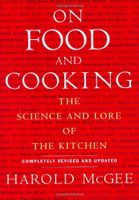Label
All
0
Clear all filters
🔥 Treat yourself (or your dad)! 25% off ckbk Premium Membership with code FATHERSDAY 🔥
Aroma: Variety and Complexity
Appears in
By Harold McGee
Published 2004
The subject of aroma is both daunting and endlessly fascinating! Daunting because it involves many hundreds of different chemicals and sensations for which we don’t have a good everyday vocabulary; fascinating because it helps us perceive more, and find more to enjoy, in the most familiar foods. There are two basic facts to keep in mind when thinking about the aroma of any food. First, the distinctive aromas of particular foods are created by specific volatile chemicals that are characteristic of those foods. And second, nearly all food aromas are composites of many different volatile molecules. In the case of vegetables, herbs, and spices, the number may be a dozen or two, while fruits typically emit several hundred volatile molecules. Usually just a handful create the dominant element of an aroma, while the others supply background, supporting, enriching notes. This combination of specificity and complexity helps explain why we find echoes of one food in another, or find that two foods go well together. Some affinities result when the foods happen to share some of the same aroma molecules.
Become a Premium Member to access this page
Unlimited, ad-free access to hundreds of the world’s best cookbooks
Over 150,000 recipes with thousands more added every month
Recommended by leading chefs and food writers
Powerful search filters to match your tastes
Create collections and add reviews or private notes to any recipe
Swipe to browse each cookbook from cover-to-cover
Manage your subscription via the My Membership page
Best value
In this section
Part of
Advertisement
Related Recipes
-
-
-
-
Related Reference
-
-
-
-
Advertisement
The licensor does not allow printing of this title



